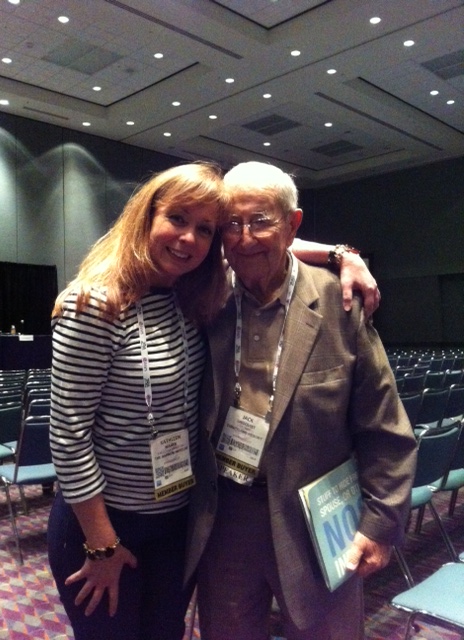In 1926, a nine year old boy and his father went to see the Christy Bros. Circus that rolled into their hometown of Wallingford, Connecticut. Mesmerized by the magic and excitement of the show, little Bill Brinley pronounced to his father that one day he would ‘have a circus of his own.’ How true these words were. With chunks of wood, cheese-boxes and a jackknife in hand, young Bill immediately began crafting a three-quarter inch scale model of his own tiny circus, creating miniature wagons, tents, horses, elephants, and even acrobats. Within weeks, a small boy’s imagination was transformed into a world of circus spectaculars that he could explore in his own backyard.

As young Bill Brinley grew, so, too, did his passion for his miniature circus creation. Just shy of ‘running away with the circus’, Bill would volunteer when the circus shows came into town, offering to help with whatever tasks would get him into the site for free. Sneaking beneath the canvas tents, equipped with his Brownie camera, tape measure, pad and pencil, Bill measured, sketched, and photographed everything. Performers, spectators, bleachers, animals, props, equipment, tents, and wagons were recorded and preserved in the smallest detail to accurately recreate his minuscule circus replicas. The tools of his creation were simple. Bedsheets from his mother’s linen closet were crafted into numerous tents and costumes, and cigar boxes and orange crates served various construction needs. He often spent his fifteen-cent allowance to purchase paint for his elaborate creation. Although the miniature model grew, his parents continued to encourage Bill to develop his unique talent, and soon the family home was cluttered with animal carvings and sprawling tents covering every surface in the Meriden house. With the addition of train cars and railroad tracks circling he layout, Bill’s backyard miniature circus soon filled an area of 17’ X 50’ and was the talk of the neighborhood.
In 1938, young Bill Brindley was invited to appear on Dave Eleman’s Hobby Lobby program and got his first big break in show business, and he was asked to show his circus at the Pier in Atlantic City. After that, Bill and his miniature model toured with the Cetlin-Wilson Show appearing at fairs throughout the South. When World War II broke out, Bill was drafted and served three and a half years with the Army Air Corps, some of that time in Alaska. Never losing enthusiasm for his craft, the young soldier took along his jackknife and jigsaw and continued whittling additions for his circus sending all the tiny creations home to his young bride, Madeline, for safe keeping until his return.

Upon returning home from the war, Bill added a new and innovative element to his miniature presentation: automation! Fitting trapeze artists, horseback riders, and even pancake-flippers with mechanical gears, his miniature circus was now in motion. Horses circled the rings, while acrobats twirled high over the heads of the many cared spectators. Later, tiny white lights were added to illuminate and dramatize the big top, banners and midway.
In 1950, Bill signed a contract with Hopalong Cassidy to exhibit the miniature circus in various cities as advance publicity for the Cole Brothers Circus. By this time the presentation had grown to include fifteen tents, forty-six wagons, one-hundred and fifty-three animals, eighty bareback riders, clowns, lion tamers, acrobats, roustabouts, and ten-thousand individually folding seats. Throughout the 1950s, Brinley’s miniature circus was traveling to almost every major city across the United States. Thousands upon thousands of adults and children were entertained by the grand presentation, and charitable engagements at children’s hospitals, orphanages, and service clubs were an important component of the traveling schedule.
Brinley went on to appear on radio and television programs with celebrities including John Cameron Swayze and Ed Sullivan. He appeared in Las Vegas with Marlene Dietrich and in Hartford, CT. with the Lone Ranger. Later he took his show to the spectacular New York’s World’s Fair (1964-1965) where he laid out his acclaimed miniature circus for more than 51 million spectators to enjoy. *

In 1967, Bill was approached by the Barnum Museum in Bridgeport, CT. to be considered as the permanent home of his magnificent model. “I had been looking for a good permanent home for it and that as the ideal place…The museum is the only original building left in the city that was given by Barnum himself.” From June of 1968 until 2010 (when the miniature circus was dismantled for conservation after the EF1 tornado struck the Barnum Museum) the Brinley’s Miniature Circus was on display on the third floor of the Museum. It is estimated that over a million visitors have enjoyed and marveled at his creation.
As Mr. Brinley’s miniature circus is restored to its original splendor, we eagerly await the day when guests can once again peer through the glass to witness moments in time of a glorious bygone era, and experience for themselves the wonder, imagination and creation of a dreamful child, and awe at the artistry of a life-long passion and the captivating man who dedicated his heart and soul to making people happy. How remarkable that a small boy’s dream could ultimately become of the greatest wonders in the State of Connecticut; a destination for all those seeking the thrill and fascination of a wondrous time, and giving all those who visit and opportunity to reflect, smile and share memories.

In 1963, Mr. Brinley is quoted:
“My wife, Madeline, has had more patience and understanding than any man could ask for…I deeply and sincerely thank my wife; my son Bill, Jr.; my mother and father, the rest of the family, and countless others, too numerous to mention, for their help in making it easy as the circus traveled along the trail.
I hope my God given talents will give enjoyment to children of all ages as they come to see the Circus.”
Thank you Mr. Brinley, they have.
You will be missed.







